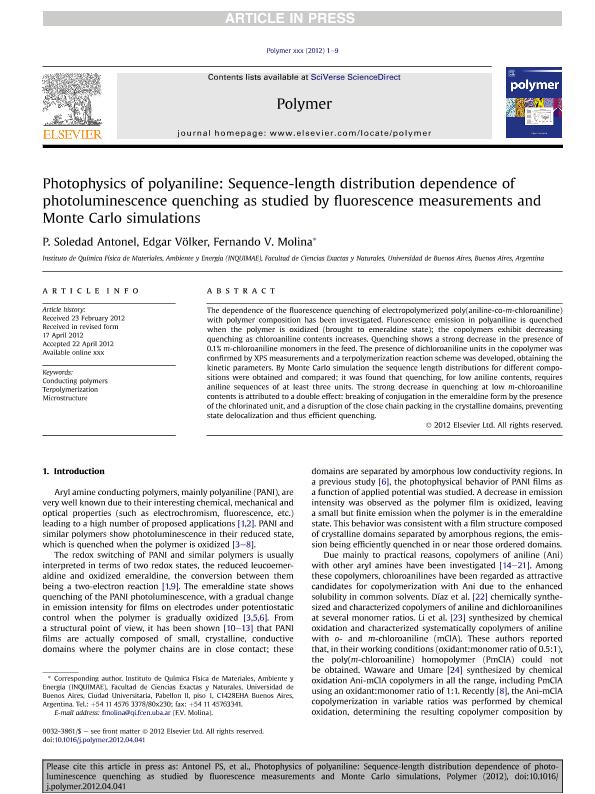Artículo
Photophysics of polyaniline: Sequence-length distribution dependence of photoluminescence quenching as studied by fluorescence measurements and Monte Carlo simulations
Fecha de publicación:
06/2012
Editorial:
Elsevier
Revista:
Polymer
ISSN:
0032-3861
Idioma:
Inglés
Tipo de recurso:
Artículo publicado
Clasificación temática:
Resumen
The dependence of the fluorescence quenching of electropolymerized poly(aniline-co-m-chloroaniline) with polymer composition has been investigated. Fluorescence emission in polyaniline is quenched when the polymer is oxidized (brought to emeraldine state); the copolymers exhibit decreasing quenching as chloroaniline contents increases. Quenching shows a strong decrease in the presence of 0.1% m-chloroaniline monomers in the feed. The presence of dichloroaniline units in the copolymer was confirmed by XPS measurements and a terpolymerization reaction scheme was developed, obtaining the kinetic parameters. By Monte Carlo simulation the sequence length distributions for different compositions were obtained and compared; it was found that quenching, for low aniline contents, requires aniline sequences of at least three units. The strong decrease in quenching at low m-chloroaniline contents is attributed to a double effect: breaking of conjugation in the emeraldine form by the presence of the chlorinated unit, and a disruption of the close chain packing in the crystalline domains, preventing state delocalization and thus efficient quenching. © 2012 Elsevier Ltd. All rights reserved.
Palabras clave:
Conducting Polymers
,
Microstructure
,
Terpolymerization
Archivos asociados
Licencia
Identificadores
Colecciones
Articulos(INQUIMAE)
Articulos de INST.D/QUIM FIS D/L MATERIALES MEDIOAMB Y ENERGIA
Articulos de INST.D/QUIM FIS D/L MATERIALES MEDIOAMB Y ENERGIA
Citación
Antonel, Paula Soledad; Volker, Edgar; Molina, Fernando Víctor; Photophysics of polyaniline: Sequence-length distribution dependence of photoluminescence quenching as studied by fluorescence measurements and Monte Carlo simulations; Elsevier; Polymer; 53; 13; 6-2012; 2619-2627
Compartir
Altmétricas




